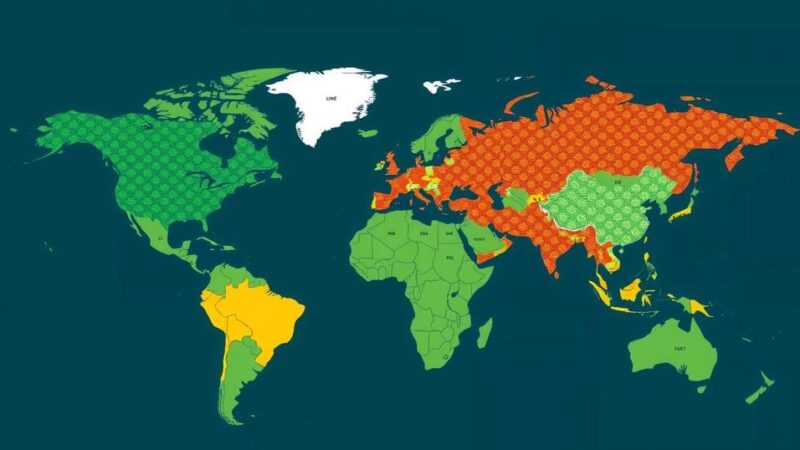On Saturday morning, Jordanian officials stated that no military aircraft had been permitted in its airspace amidst reports of planes flying over the country, reportedly captured on video by residents. This incident raises questions about airspace violations and the diplomatic responses that Jordan may pursue concerning potential infringements by Israel.
Recently, tensions have intensified following an alleged breach of Jordanian airspace during a military operation targeting Iran. On Saturday morning, the Jordanian government asserted that it had not authorized any military aircraft to enter its airspace. However, reports emerged of Jordanian residents capturing video footage of fighter jets maneuvering in the skies over Jordan, heightening concerns regarding sovereignty and airspace violations. A country’s airspace encompasses the aerial domain above its land and territorial waters, up to an undefined altitude that separates it from outer space. While there is no universally agreed altitude marking this boundary, the Kármán line, recognized internationally, is located at approximately 100 kilometers (328,000 feet) above sea level. Below this line, all air traffic is considered part of a nation’s sovereign airspace. Fighter jets typically operate at much higher altitudes than commercial airlines, which generally fly between 30,000 and 40,000 feet. For reference, the F-16 fighter jet has a maximum operational altitude of around 50,000 feet, while the more advanced F-35 can reach altitudes of approximately 60,000 feet. Should any aircraft have indeed flown over Jordanian territory, this could constitute a significant infringement of national airspace. In response to these alleged incursions, Jordan may engage in a multifaceted diplomatic strategy. Possible actions include summoning the Israeli ambassador for immediate discussions, filing complaints with the United Nations Security Council, and issuing formal statements of protest. Historically, Jordan has exercised restraint in such matters; its diplomatic maneuvers are likely aimed at maintaining regional stability, especially given its previous role in countering Iranian missile threats targeting Israel. Jordan’s preference for diplomacy exemplifies its strategic focus on upholding critical relations with Israel while addressing sovereignty concerns in a non-confrontational manner.
The dynamics of Jordanian airspace regulation are intertwined with broader regional tensions, particularly in regard to military operations involving neighboring countries such as Israel and Iran. This recent situation arises amidst ongoing concerns over military incursions that may impact national sovereignty. Jordan has historically maintained a delicate balance in its foreign relations, often opting for diplomatic resolutions to conflicts to prevent escalation. Understanding the altitude regulations concerning airspace and military operations is crucial in assessing the implications of any alleged breaches and the subsequent responses from the Jordanian government.
The alleged breach of Jordanian airspace by military aircraft following an operation against Iran has raised significant diplomatic tensions. With Jordan asserting its sovereignty while navigating complex regional dynamics, the likelihood of a restrained diplomatic response seems probable. This situation highlights the delicate balance Jordan must maintain between addressing violations of airspace and sustaining its relations with Israel. Through a calculated diplomatic approach, Jordan aims to preserve both its national interests and regional stability.
Original Source: www.jpost.com






